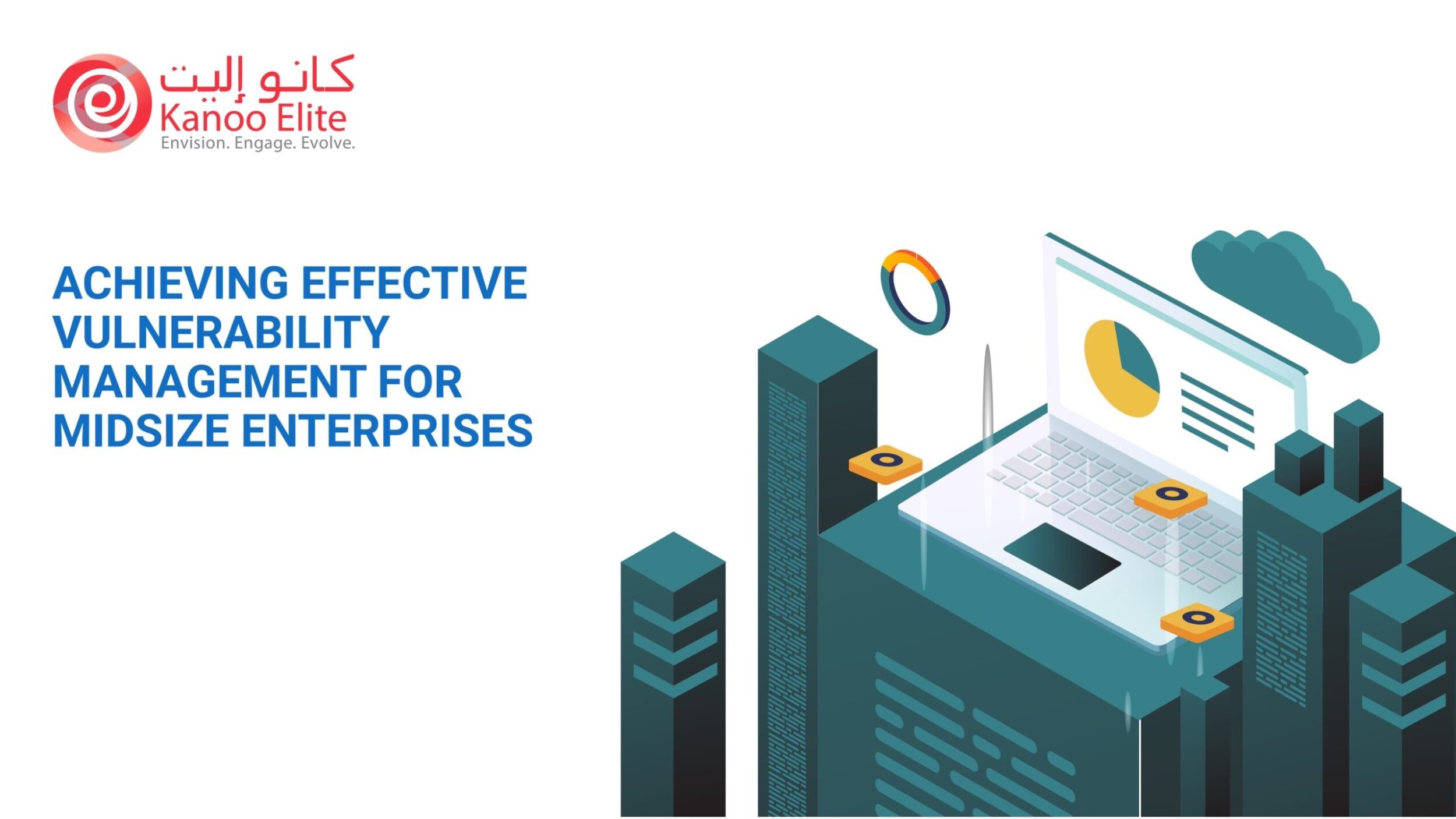Vulnerability management is widely described as the practice of identifying security vulnerabilities in unpatched systems that if exploited by adversaries, can put your entire enterprise environment at risk. Typically, vulnerability management is a foundational practice, and an integral part of any standard cybersecurity initiative. However, constantly changing device demographics and increasing sophistication in cyberattack techniques, including an increase in recent multi-pronged attacks, are challenging the existing vulnerability management practices.
Midsize enterprises are tasked with treating an increasingly large amount of identified vulnerabilities yet lack resources to address them. Through this whitepaper, we will discuss strategies an organization must prioritize to achieve an effective vulnerability management program which continually monitors, analyse, and assesses risk, wrapping its arms around security weaknesses and shining a light on exposures that can negatively impact the enterprise.
Analysis
While performing regular and ongoing scanning for unpatched vulnerabilities is a start in the right direction, it is woefully insufficient given the current breadth of attack surface and the pace of change in highly dynamic IT environment. Knowing where to prioritize remediation and mitigation efforts will enable MSE infrastructure and operations (I&O) leaders responsible for security to use their limited resources more effectively. Prioritizing the organization’s “crown jewels” and internet-facing systems, instead of attempting to patch every vulnerability on a report, will help give a better view into what is important to the business. The following pointers will guide you to setup an effective vulnerability management program:
Identify Critical Infrastructure, Endpoints and Applications
Certain applications and endpoints may hold more value and necessity in performing job duties and need to be treated as such in a vulnerability management program. Prioritizing these applications and endpoints in a vulnerability management program can alleviate those issues and help to ensure the business can maintain suitable performance.
Evaluate Vulnerability Mitigation Service-Level Agreements
Understanding the organization’s capacity for risk — how much risk it’s willing to take — is a fundamental element of the organization’s ability to commit to successful business initiatives. Responding to vulnerabilities comes in three forms: patch management (or remediation), mitigating the vulnerabilities through compensating controls and acceptance of risk.
SLA timelines can also be influenced through the use of threat intelligence. Organizational teams should work with the IT Team to establish multiple timelines: those with proper compensating controls already in place, and those with patches, and address priority levels for the assets in the environments so that the SLAs agreed on with the vendor line up with the response that organization can provide.
Use Layered Security Controls Early in the Architecture and Deployment Process
MSEs (Midsize enterprises) should consider the architecture of the environment when remediating vulnerabilities. Layering controls properly can give a vulnerable system some measure of protection until the proper testing can be done to further mitigate the vulnerability. MSEs need to work with their security vendors to determine what combination of tools will work best to fit their needs. Choosing what tools to deploy and how they interact with one another will help the organization be prepared if a vulnerable application or system cannot be patched. Should a vulnerability be exploited, these decisions can save the organization money, time and its reputation.
Summary
Fast Track 10 Steps for Achieving Effective Vulnerability Management:
- Asset Identification & Management – Gain visibility into applications, underlying systems and vulnerabilities.
- Vulnerability Identification – Rate the vulnerabilities discovered.
- Consistent Vulnerability Management – Regularly scan entire network with active vulnerability scans more than once per quarter.
- Risk Assessment – Utilize to identify, estimate, and prioritize risk to organizations.
- Change Management – Have a proper change management policy.
- Patch Management – Have a proper patch management policy, respective to the change management policy.
- Mobile Device Management – Secure mobile endpoints as they are the most targeted by malwares.
- Mitigation Management – Mitigation Policy is effective to success.
- Incident Response – Have proper SLA and Policies in place and a dedicated response team.
- Automation – Integrate automation to auto-remediate infected hosts.
Kanoo Elite with its years of experience in establishing vulnerability programs for organizations across the globe, along with its expanded scope and visibility, will assist you to achieve an effective vulnerability management program aligned with high-level strategies, and integrated with core elements of the business and will prove to be the foundation that supports the organization’s cybersecurity posture, agility, and cyber-resilience.



